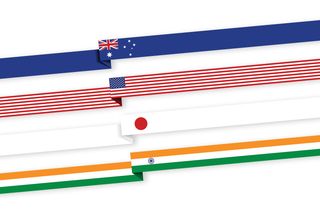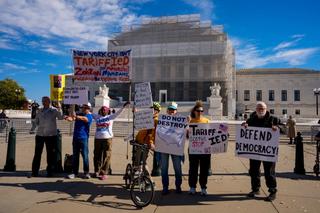On 23 May 2022, President Biden announced the Indo-Pacific Economic Framework (IPEF) in Tokyo alongside 12 Indo-Pacific partners. IPEF is unlike the Trans-Pacific Partnership — which President Trump withdrew the United States from in 2017 — and other conventional trade agreements in that it does not include any offers to foreign countries for increased market access and tariff reductions from the United States. Instead, the loosely defined economic framework entails four distinct pillars that participants will negotiate separately: digital trade; supply chains; climate and clean energy; and anti-corruption efforts.
To re-launch the USSC Debate Papers series, the United States Studies Centre invited Wendy Cutler, Vice President at the Asia Society Policy Institute and a veteran USTR trade negotiator, and Daniel M. Price, Managing Director at Rock Creek Global Advisors and a former senior White House official responsible for international trade and investment in the George W. Bush administration, to discuss the Biden administration's first major trade-related effort in the Indo-Pacific.
So far, the glass is half full
by Wendy Cutler
The Indo-Pacific Economic Framework (IPEF) is a substantive, forward-looking initiative that focuses on some of the most pressing issues facing regional governments and their citizens, including unprecedented supply chain disruptions, severe climate change impacts, and a growing digital divide. While trade is an important feature of the initiative, its agenda rightly goes beyond what is found in traditional trade agreements. As National Security Advisor Jake Sullivan recently said, “IPEF is a 21st-century economic arrangement designed to tackle 21st-century economic challenges.” IPEF is expected to serve as a platform for establishing common norms and standards among participants on these emerging matters while furthering cooperation and capacity-building efforts.
IPEF is an important vehicle for enhanced US economic engagement and leadership in the dynamic and innovative Indo-Pacific region. Since the Trump administration’s exit from the Trans-Pacific Partnership (TPP) in 2017, US economic initiatives in the Indo-Pacific have been sporadic at best, leaving US regional relationships largely defined by security ties. While the security leg is unquestionably important, our partners have been clear: without a strong economic pillar, US engagement will be incomplete and will drive our partners closer to China for trade, investment and supply chain connectivity. The wide and diverse participation of 13 regional partners in IPEF is a testament to the fact that these countries want the United States back in the region engaged in the economic arena.
Our partners have been clear: without a strong economic pillar, US engagement in the Indo-Pacific will be incomplete and will drive our partners closer to China for trade, investment and supply chain connectivity.
Our regional partners have not slowed down while Washington has been largely missing in action on the trade front. Across the Indo-Pacific region, we have witnessed a steady march of new trade agreements that do not include the United States. As a result, Washington has ceded the development of new rules, standards and norms to others, while being denied the market access benefits directed to others. IPEF puts the United States back in the mix, opening new opportunities for the United States to help shape the rules and gain further access to the growing and innovative Indo-Pacific markets while serving as an important counterweight to Chinese regional economic integration efforts.
IPEF is designed to pave the way for outcomes in any of the four pillars to be realised relatively quickly. Many, if not all of the IPEF results may not need US congressional approval, which history has shown can take several years. Furthermore, IPEF will likely facilitate “early harvest” outcomes — narrower agreements that can be implemented as soon as they are agreed upon, rather than waiting for all elements of a comprehensive agreement to come together. This becomes all the more important given how fast complex economic issues, like supply chain resiliency and digital trade, are evolving in all corners of the world in real-time.
Furthermore, IPEF is not necessarily the end of the story. If successful and impactful, it can be a stepping stone to even stronger regional economic integration efforts among the United States and the IPEF partners. This could even extend to US tariff cuts, which the recent USTR IPEF Federal Register notice makes clear are off the table “at this time.” It’s undeniable that for certain IPEF partners, tariff reductions would help unlock their willingness to embrace other issues of importance to the United States. IPEF is expected to offer other benefits and incentives that go a long way in alleviating tariff concerns.
Thirteen regional partners have confirmed that IPEF is a solid, serious and relevant initiative by joining, and the door remains open for others. That said, IPEF, like any initiative, has its shortcomings. Many observers are quick to compare it to a comprehensive trade agreement, particularly TPP’s successor, the Comprehensive and Progressive Agreement for Trans-Pacific Partnership, and conclude it doesn’t meet the mark given that IPEF currently entails no tariff reduction, little if any enforceability, and questionable endurance. However, a more appropriate way to evaluate IPEF is the alternative: Are the United States and the region better off with no US-led economic engagement platform in the Indo-Pacific region versus an initiative that may not go far enough, at least initially? Of course not. The time is ripe for the United States to step up its economic engagement in the region and work with others to produce meaningful IPEF outcomes that matter for their citizens, workers and businesses.
Wendy Cutler is Vice President at the Asia Society Policy Institute (ASPI). She spent nearly three decades as a diplomat and trade negotiator in the Office of the US Trade Representative.
So far, the glass is half empty
When President Biden took office, his team pledged to pursue a foreign policy “for the middle class” and a “worker-centric” trade policy. Seventeen months later, they have yet to translate these slogans into an affirmative international agenda with concrete outcomes. US allies and partners increasingly fear that these slogans provide not a “prism” for US policy but a “prison” that is paralysing US engagement.
Summit and leaders’ statements hailing shared democratic values cannot substitute negotiating real trade, investment and supply chain agreements that provide shared benefits and restore US leadership. Nowhere is this shortfall more palpable or dangerous than the Indo-Pacific. The United States must urgently move to deepen economic linkages and erase doubts about its long-term commitment to the region, which is vital to US economic and strategic interests.
The most obvious approach — advocated by Australia, Japan, Singapore, New Zealand, and others — would be for the United States to rejoin the Trans-Pacific Partnership (TPP) while seeking to renegotiate, update, or strengthen certain elements, including rules on the environment, digital trade and critical supply chains. Regrettably, the Biden administration has rejected this course, unwilling to take on either the far-left or the Trumpian-right.
As it currently stands, IPEF is simply not enough. A broad and general framework will do little for America’s middle class, workers, or strategic interests.
Instead, the United States has proposed the Indo-Pacific Economic Framework (IPEF), an initiative thus far only vaguely defined by soundbites, a launch statement outlining four notional “pillars,” and a leaked “scoping paper” on a trade pillar that dare not speak of trade.
As it currently stands, IPEF is simply not enough. A broad and general framework will do little for America’s middle class, workers, or strategic interests.
What can the United States do to make IPEF meaningful and attractive? Here are four suggestions:
On trade
Put traditional market access on the table to enable IPEF to achieve its objectives of strengthening supply chains and decarbonising our economies.
Promote trade in manufactured and agricultural products by requiring product standards to be non-discriminatory, based on scientific evidence and consistent with agreed international norms.
Include ambitious digital provisions that can drive growth and innovation, create jobs in manufacturing, agriculture, and services, and promote “upskilling,” while maintaining regulatory flexibility to address the challenges of the rapidly evolving digital economy.
On supply chains
IPEF countries are already party to trade agreements (including the Regional Comprehensive Economic Partnership Agreement and the Comprehensive and Progressive Agreement for Trans-Pacific Partnership) designed to promote regional trade platforms. Without new market access from the United States on offer, it will be difficult to shift supply chains away from dominant markets like China. The North American supply chain works so well because components and finished products move duty-free according to comparative advantage.
If a goal of IPEF is to build resilient supply chains for critical goods — such as semiconductors or electric vehicle batteries — the agreement must provide meaningful incentives to produce those goods (and their related services) in IPEF countries. As a start, the parties could agree on both favourable tariff treatment and common standards for such goods that facilitate trade within IPEF, and of products and services that meet those standards.
Without such incentives, companies will take advantage of the preferential access provided by existing free trade agreements that do not include the United States, thus excluding US-based companies and workers. If the Biden administration is serious about wanting to help US workers and boost competitiveness, we need to be part of the supply chains in the world’s fastest-growing regional economy.
On investment
Commerce Secretary Raimondo recently observed that IPEF may lead to additional US investment in the region. IPEF partners would certainly welcome that. But to make it happen, IPEF must include specific commitments that attract investment.
For example, IPEF should incorporate enforceable investment protections that address key challenges of discrimination, arbitrary treatment, forced tech transfer, and intellectual property theft.
The United States could also mobilise private capital by committing to increase public financing of clean tech and the energy transition, and by developing new public-private partnerships.
In the end, private sector investment in clean infrastructure and technologies will be driven less by the promise of public funds and more by the prospect of market access and improved domestic investment regimes.
Get moving
After months of talks, even our closest allies are now impatient for a clearer vision and more tangible US economic engagement. The Biden administration should swiftly put meat on the bones of its initiative to maximise its economic and strategic value for the United States and its partners.
The recent adoption by the US Congress of the CHIPS and Science Act, together with R&D and energy provisions of the Inflation Reduction Act, marks a beginning for domestic renewal of the US industrial and technology base. What is needed now is an international economic agenda that is no less ambitious. IPEF, as presently articulated, falls short. But it is not too late for the Biden administration to break free of its own rhetorical prison.
Daniel Price is Managing Director at Rock Creek Global Advisors and formerly served as international economic advisor and “sherpa” to President George W. Bush.








